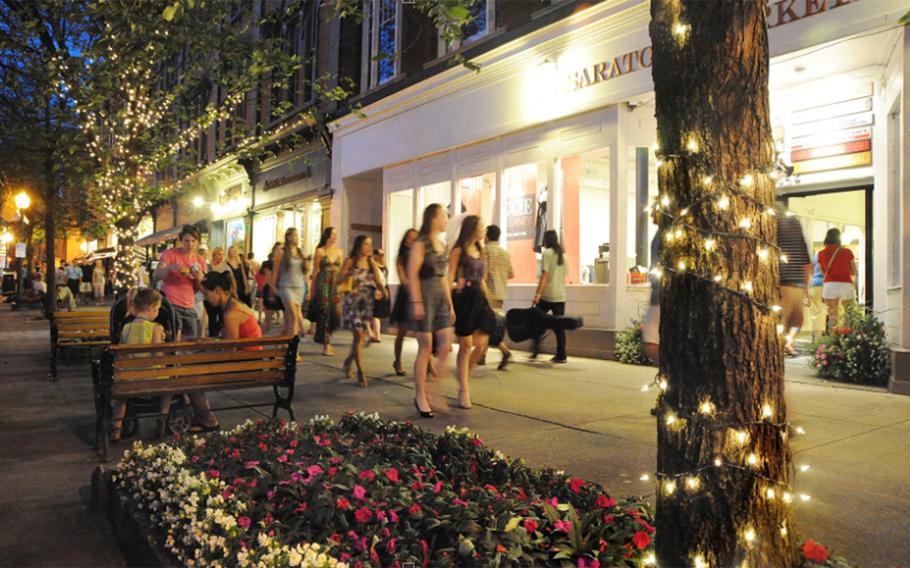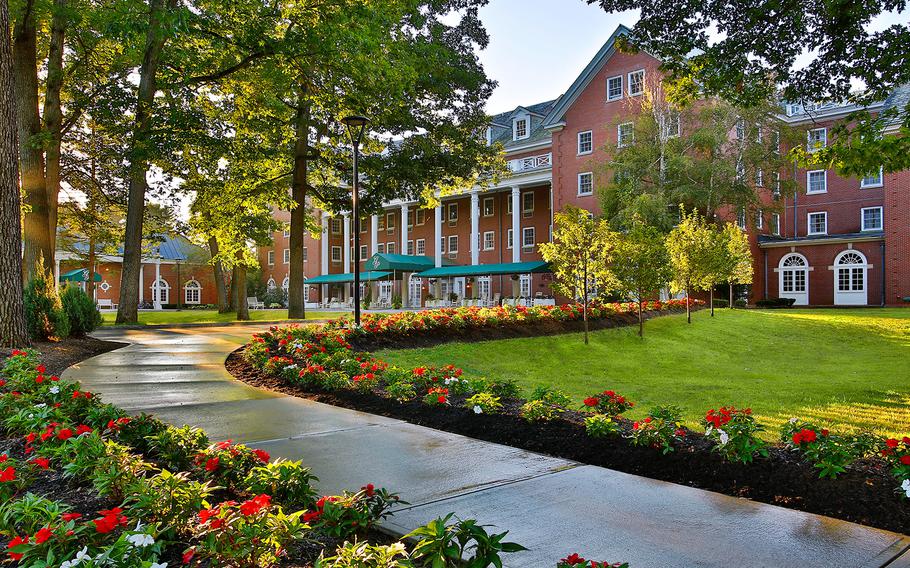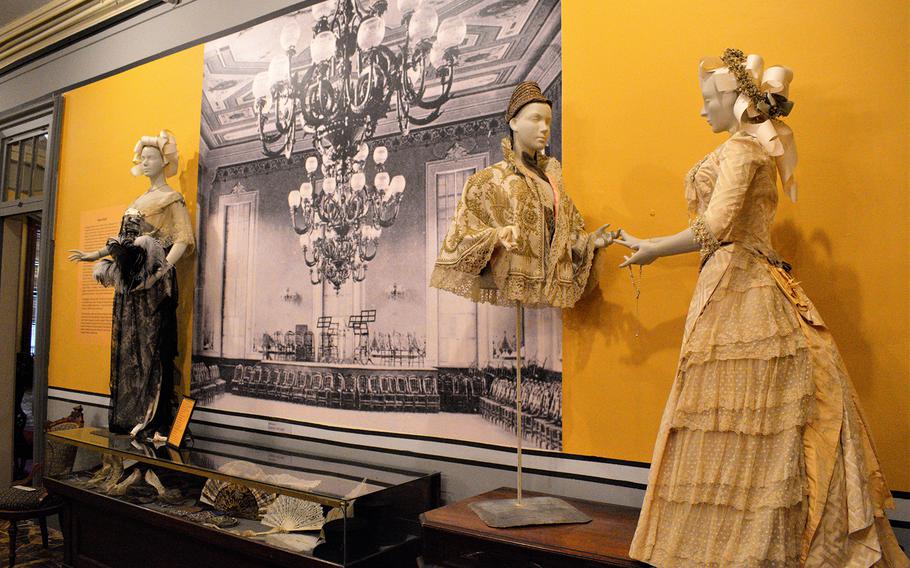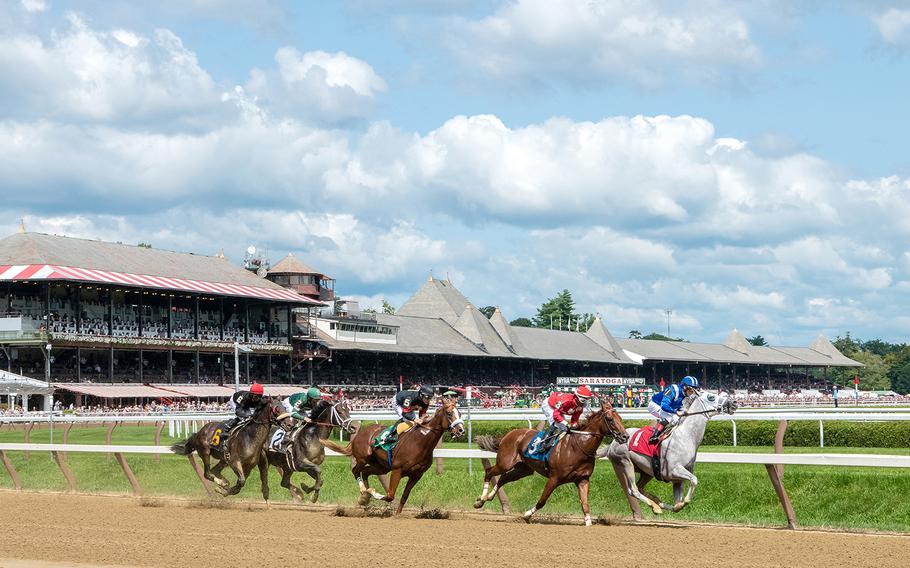
Despite its air of wealth and privilege, it would be a mistake to dismiss Saratoga as a relic of the past. The town bustles with activity. (Discover Saratoga/TNS)
“From New York City you drive north for about 175 miles, turn left on Union Avenue and go back 100 years,” wrote the late sports columnist Red Smith.
Smith was referring to Saratoga Springs, a bucolic community nestled in the foothills of the Adirondack Mountains in upstate New York.
I didn’t drive, opting instead for a four-hour train journey (mostly along scenic stretches of the Hudson River), but upon arrival I understood what Smith was talking about.
The Victorian houses on the tree-lined streets get a fresh coat of paint periodically. Some have been converted into apartments and condominiums, but you still expect a horse-drawn carriage to pull up in front of them, discharging a well-turned-out lady and gent.
The historic Gideon Putnam Hotel in the Saratoga Spa State Park is now officially the Gideon Putnam Spa & Resort, but it retains its air of gentility. (In case you’re wondering, Gideon Putnam was a 19th century entrepreneur and one of the founders of Saratoga Springs.)

The Gideon Putnam Resort & Spa in Saratoga Springs, N.Y., retains an air of gentility from the old days. Putnam was a 19th century entrepreneur and one of the founders of Saratoga Springs. (Discover Saratoga/TNS)
Broadway is lined with chic boutiques and trendy shops, but neighboring Congress Park is a sprawling green space — dotted with weeping willows and duck ponds — in the midst of which is a beautifully painted carousel.
Here, past overtakes present. The red brick building overlooking the park — now the Saratoga Springs History Museum — originally was the Canfield Casino.

An exhibit from the Saratoga Springs History Museum. Originally the museum was the Canfield Casino. (Discover Saratoga/TNS)
Opened in 1870 by Irishman John Morrissey, a one-time bare-knuckle boxing champion and associate of New York City’s infamous Boss Tweed, it became popular with high-stakes types. Its exclusivity was the result of Morrissey’s iron-clad rules: “no ladies, no locals, no credit.”
Morrissey’s past may have been checkered (he was implicated in the murder of Bill “the Butcher” Poole as chronicled in Martin Scorsese’s film “Gangs of New York”), but he successfully cloaked himself in respectability, even being elected to Congress twice.
Figuratively speaking, his knuckles may have been scarred, but they were encased in kid gloves.
Take a fascinating peek at life during the Gilded Age on a guided tour or book the ghost tour (the building has been featured on Ghost Hunters.)
The birthplace of thoroughbred racing
Saratoga is known for its racecourse, America’s oldest (1863) where during its heyday, patrons such as actress Lillian Russell and her paramour, gambler Diamond Jim Brady, could be spotted hobnobbing with assorted Whitneys, Vanderbilts and DuPonts.

Saratoga is known for its racecourse, America’s oldest (1863) where during its heyday, patrons such as actress Lillian Russell and her paramour, gambler Diamond Jim Brady, could be spotted hobnobbing with assorted Whitneys, Vanderbilts and Duponts. (Michael Gallitelli/TNS)
The track’s crown jewel is the Travers Stakes, held the third Saturday in August and often referred to as “the Mid-Summer Derby.”
Saratoga’s 40-day racing season runs from mid-July to Labor Day, but horses are on the agenda year-round at the National Museum of Racing across from the racetrack.
Walk through a replica of a starting gate and begin your journey. Among the well-curated exhibits: a statue of Secretariat in the courtyard; saddles belonging to iconic Thoroughbreds Phar Lap, Seabiscuit and Whirlaway; and an entire gallery devoted to the Travers, often referred to as “the graveyard of champions.”
That moniker comes from the fact that Secretariat, Man ‘o War and Affirmed were just a few of the giants who, after winning big everywhere else, came up short at Saratoga.
Before the track were the baths
Before Saratoga Springs was a mecca for those with (gambling) fever, it was a mecca for those suffering from gout. The 65-mile-long Saratoga Fault is broken by fissures that produce springs rich in minerals and salts. The water’s healing qualities were first discovered by the region’s Mohawk and Oneida tribes who named the area Saraghoga, “place of swift waters.”
Dutch and English settlers followed, and even before the Revolutionary War the Springs had gained a reputation for mineral baths, reaching its zenith during the mid- to late 1800s when Saratoga was known as “the Queen of the Spas.”
Today, visitors who want to indulge head to Saratoga Spa State Park, site of the Roosevelt Baths. Resembling a European-style bathhouse, the baths (named to honor President Franklin Roosevelt for his efforts to preserve the character of Saratoga) reek of atmosphere and Old World charm.
The signature treatment is the 40-minute soak in a private bath where hot, fresh water is added to the natural cold mineral water, leaving one with a sense of invigoration and rejuvenation.
Beyond horses and baths
Despite its air of wealth and privilege, it would be a mistake to dismiss Saratoga as a relic of the past. The town bustles with activity.
Skidmore College students turn Putnam Street into one big party on the weekends; galleries, artists’ studios and shops have found homes in spruced-up Victorian bungalows; and more than 60 restaurants, most espousing a farm-to-table philosophy, are sprinkled throughout the town.
Go to Sweet Mimi’s Café for breakfast and order their lemon ricotta pancakes, a winner on television’s Beat Bobby Flay.
If you have a hankering for ethically sourced caviar and a glass of bubbly, grab a seat in the intimate Bocage Champagne Bar, an adorable jewel box of a place just off the main drag.
For a meal with a view, opt for Lago by Druthers for the specialty pizzas and a table overlooking the shores of Lake Saratoga, or Prime for its premier steaks and a table overlooking the course at Saratoga National Golf Club.
However, if it’s culture you’re hungry for, you’ve come to the right place. Saratoga Performing Arts Center has an outdoor amphitheater in the middle of a nature preserve that serves as a summer venue for such prestigious companies as the New York City Ballet, the Chamber Music Society of Lincoln Center and the Philadelphia Orchestra.
I had a chance to hear the orchestra during a remarkable performance of Richard Strauss’ “An Alpine Symphony,” conducted by Yannick Nezet-Seguin.
An epic opus about a day of mountain climbing in the Alps, the music runs the gamut from tinkling cowbells to an electrifying thunderstorm.
The ambitious choice of musical program (almost an hour in length and requiring 125 instruments) combined with the gorgeous setting made for an unforgettable evening.
Unforgettable is a word that could describe Saratoga Springs in general. Destinations don’t always live up to their hype, but Saratoga’s motto “Easy to reach ... always exceptional,” could be considered, in racing terms, right on the money.